#qldfloods
Text
Crowdsourced (8)
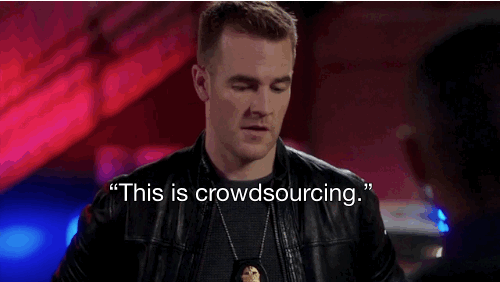
The South East Queensland floods in 2011 was a devastating natural disaster. 35 confirmed deaths and over 200,000 people affected. Various social media platforms were increasingly used by media and emergency service departments to distribute and communicate information with the State as power went down and mobile devices were left standing.
According to research by Arc Centre of Excellence for Creative Industries and Innovation, Twitter hashtag #qldfloods was used in more than 35,000 tweets and became the ‘central coordinating mechanism for floods-related user activity’ and these tweets ‘focussed predominantly on sharing directly relevant situational information, advice, news media and multimedia reports’ (Bruns et al, 2012).

This type of online sharing of real-time information in times of crisis’s fits into the broader definition of what is known as ‘Crowdsourcing’ – ‘the practice of obtaining needed services, ideas, or content by soliciting contributions from a large group of people and especially from the online community rather than from traditional employees or suppliers' (Merriam Webster Online 2014).
It is in fact a rapidly changing landscape the way in which media outlets and emergency services respond to, and engage with, the public in times of natural disasters and crises.
Media outlet ABC now incorporate social media as part of their emergency and disaster situation strategy through publishing key messages with links to online articles and other emergency services/agencies, as well as real-time crowdsourced information (Posetti et al, 2012).
Crowdsourcing has however, transformed into more than just retweeting and reposting emergency and disaster situations on social media.
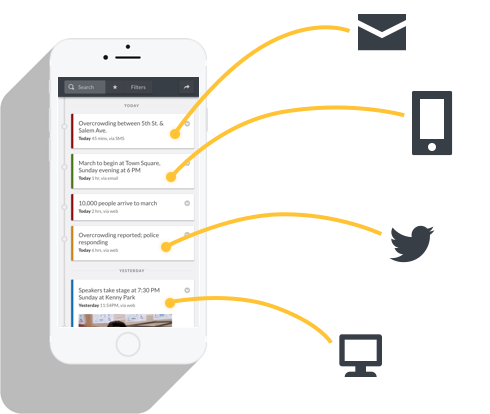
Ushahidi, which translates into ‘testimony’ in Swahili, is an app which was developed in Nairobi to map reports of violence in Kenya after the post-election violence in 2008. Thousands have since used Ushahidi’s crowdsourcing tools to raise their voice, providing software and services to numerous sectors and civil society to help improve the bottom up flow of information (Ushahidi 2018). The tool has evolved quite a bit, but initially worked by integrating SMS, 'Twitter, Facebook as well as updates from the web, so that a crowdsourced picture of an event unfolding over time could be depicted on a single map' (Ford 2012, p. 35).
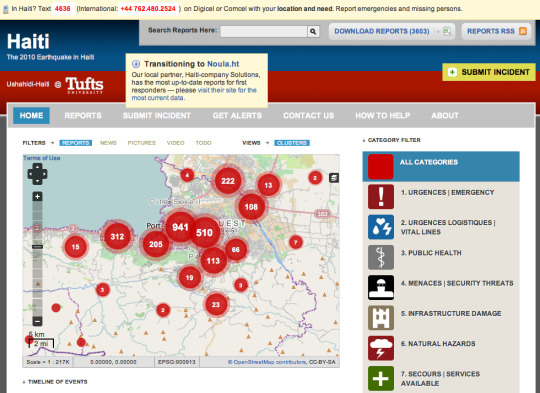
Ford notes that although quite liberating in situations where there is little location-specific information available, or where an event covers a vast geographical area, challenges are posed in terms of verification of information and in many cases, misinformation, or inaccurate information being as damaging as no information at all, thus emergency services authorities are often reluctant to draw on crowdmapping (crowdsourcing) without systems in place to check and verify information (Ford 2012).
Although I agree to an extent regarding the reluctance of use by emergency services authorities due to issues around accuracy, I believe these innovations in technology for facilitating and improving the flow of information among communities is vital, particularly given the vast majority of society lives online. Perhaps crowdsourcing technology in times of crisies in the 21st century is what radio was in the years pre and post WWII.
References
Bruns, A, Burgess, J, Crawford, K & Shaw, F 2012, ‘#qldfloods and @QPSMedia: Crisis Communication on Twitter in the 2011 South East Queensland Floods’, Arc Centre of Excellence for Creative Industries and Innovation, pp. 7-10, viewed 26 September 2018, <http://www.cci.edu.au/floodsreport.pdf>
Creighton, D, 2016, ‘Queensland floods 2011, The floods by the numbers’, The Brisbane Times, 12 January, viewed 29 January 2019, <https://www.brisbanetimes.com.au/national/queensland/queensland-floods-2011-the-floods-by-the-numbers-20160112-gm4czk.html>
Ford, H 2012, 'Crowd Wisdom', Index on Censorship, vol. 41, no. 4, pp. 33-39
Postetti, J & Lo, P 2012, ‘The Twitterisation of ABCs Emergency & Disaster Communication’, Australian Journal of Emergency Management, Vol. 27, no. 1, pp. 34-39
Ushahidi, 2019, ‘About Ushahidi’, Ushahidi, viewed 29 January 2019, · <https://www.ushahidi.com/about>
Images
https://twitter.com/hashtag/qldfloods
https://giphy.com/gifs/vulture-xTiTnhXjLyayuvu3hm
https://www.ushahidi.com/
https://www.ushahidi.com/blog/2010/04/14/crisis-mapping-haiti-some-final-reflections
1 note
·
View note
Photo

TONIGHT! QLD & NSW FLOOD APPEAL VIRTUAL GIG! Saturday the 2nd of April, 6:30pm AEST. Here, on #InstagramLive Fundraising for @givit_aus [ID: Slide 1: A white sign hangs on a pink background. Bold black and pink text, reads "FLOOD APPEAL INSTAGRAM LIVE GIG!" Smaller text on the sign, reads "TONIGHT at 6:30pm AEST on @bette_foord_music , to raise funds for the flood victims." Below the sign, black text reads "All donations will be going to Givit.org.au" Slide 2: A white sign eith black text, sits on a pink background. Bold black text reads "DETAILS". Below, in smaller black text, it reads "To donate (money, items or time) to the Flood victims, simply go to the link in my bio & click "QLD & NSW Flood Appeal: Donations & Info" or search https://www.givit.org.au/storms-and-flooding Then log on to Instagram at 6:30pm AESTon Saturday 2nd, search @bette_foord_music and click the profile picture to watch the live virtual fundraiser! I'll see you, then!] #Fundraising #GivIt #FloodAppeal #Floods #QldFloods #NSWFloods #VirtualGig #Gig #Music #Musician #Musicians #MusicianLife #MusiciansLife #MusiciansOfInstagram #PinUp #Singer #Songwriter #SingerSongWriter #Uke #Ukulele #VintageStyleNotVintageValues #MelbourneMusician https://www.instagram.com/p/Cb1HiiTPg53/?utm_medium=tumblr
#instagramlive#fundraising#givit#floodappeal#floods#qldfloods#nswfloods#virtualgig#gig#music#musician#musicians#musicianlife#musicianslife#musiciansofinstagram#pinup#singer#songwriter#singersongwriter#uke#ukulele#vintagestylenotvintagevalues#melbournemusician
0 notes
Photo

Ok Monday, let’s do this! 💙 Thanks to @cavoodleisla for our much wuved luxury scarf @hgpluxurypetaccessories #cavoodleislaturnsthree Use our code ANGUS at checkout @hgpluxurypetaccessories for a discount off your next purchase #ithastobehgp HGP WIILL DONATE 10% of every order for the next week to a charity dedicated to helping flood affected animals in QLD & NSW @hgpluxurypetaccessories 📸 @courtraits #dogsofinstagram #toycavoodle #toycavoodlesofinstagram #qldfloods #ifitsfloodedforgetit #animalsofinstagram #cavoodlegram #dogsofnoosa #dogsofbrisbane #petsofbrisbane #dogsofaustralia #dogsaustralia #animallovers #dog #dogsaustralia #cutestpetsofaustralia #pet #animals #mybrisbane #petfriendlyaustralia #petfriendlytravel #bestwoof #coverdogs #dogstheamazing #dogstagramdog #doodletales #nswfloods #dogsdownunder #travelaustraliawithdogs (at Lake Weyba) https://www.instagram.com/p/Caxs7MHBxm2/?utm_medium=tumblr
#cavoodleislaturnsthree#ithastobehgp#dogsofinstagram#toycavoodle#toycavoodlesofinstagram#qldfloods#ifitsfloodedforgetit#animalsofinstagram#cavoodlegram#dogsofnoosa#dogsofbrisbane#petsofbrisbane#dogsofaustralia#dogsaustralia#animallovers#dog#cutestpetsofaustralia#pet#animals#mybrisbane#petfriendlyaustralia#petfriendlytravel#bestwoof#coverdogs#dogstheamazing#dogstagramdog#doodletales#nswfloods#dogsdownunder#travelaustraliawithdogs
0 notes
Text
🚿 This electric vehicle helped power flood cleanup efforts this week with vehicle to load technology. With generators sold out, it was a quick way to power pressure washers on the go.
0 notes
Photo

⚡️Peter Dutton / DBZ crossover⚡️ - Goku is a dummy but at-least he isn’t actually evil. He would make a better leader than Adolf Kipfler (@peterduttonmp). - #auspol #votethemout #dbz #peterdutton #dragonballz #qldfloods #bushfires #nswfloods #disasterrecoveryfund #lismore #australia #illustration #politicalcartoon #sketch #drawing (at Parliament House, Canberra) https://www.instagram.com/p/Calj8rVpgd5/?utm_medium=tumblr
#auspol#votethemout#dbz#peterdutton#dragonballz#qldfloods#bushfires#nswfloods#disasterrecoveryfund#lismore#australia#illustration#politicalcartoon#sketch#drawing
0 notes
Text
Corwdsourcing in times of crisis
Week 8: Crowdsourcing
The practise Crowdsourcing is used to obtain needed services, ideas, or content by soliciting contributions from a large group of people and the online community (Merriam Webster 2014).

In recent years, the world has been hit with a tirade of natural and human-inflicted disasters. Take for instance the 2011 South East Queensland floods, Black Saturday 2009 and the earthquakes in Christchurch. When these disasters occur, information and communication become paramount to all involved. This is when the expertise of social media comes into play.

My own encounter with crowdsourcing came about during the 2009 Black Saturday Fires. I live in Gippsland and we are predominantly a farming area. This means that we are at high risk for bushfires. During the Fires council, CFA, police and even radio stations online profiles were constantly used to update the community with fire information. The information was shared around social media and it was used as a means of tracking affected areas as well as ensuring loved ones were safe. The CFA also had an app that allowed people to create watch zones for particular areas so they would be notified if danger came within a certain distance to that area. Every single fire season, we have at least one area in Gippsland go up in flames. So the need for accessible information in times of crisis is extremely important to the people in the area.
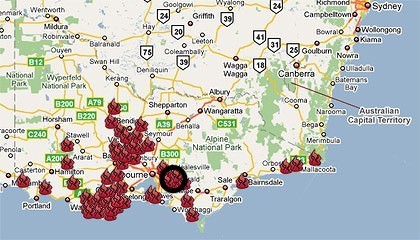
(This is a snapshot of the CFA fire app on Black Saturday, the area circled is my part of Gippsland)
Let’s take a look at the 2011 South East Queensland floods crisis where social media platforms Facebook and Twitter were detrimental in keeping people updated with information (Burns et al. 2012 p. 7). The twitter hashtag #qldfloods became the key coordinating mechanism for flood-related user activity (Burns et al. 2012 p. 7). The hashtag quickly became a viral topic as people were constantly retweeting any and all information that was being posted on Twitter. The constant retweeting and hashtagging enabled the information to increase its reach and allowed for easy access to relevant messages. The messages provided by emergency services were amongst the most visible due to the constant retweeting of their posts (Burns et al. 2012 p. 7). The great thing about crowdsourcing in this situation was the ability for people to stay updated on the crisis situation. When natural disasters like this occur, traditional forms of communication such as television and radio broadcasting can become non-existent due to connections being shut off. Whereas, social media can still provide a ground to share important information.

References:
Burns, A, Burgess, J, Crawford, K & Shaw, F 2012, #qldfloods and @QPSMedia: Crisis Communication on Twitter in the 2011 South East Queensland Floods, Brisbane, pp.https://eprints.qut.edu.au/48241/1/floodsreport.pdf, viewed 2 February 2019 <https://eprints.qut.edu.au/48241/1/floodsreport.pdf>.
Webster, M 2014, Definition of CROWDSOURCING, viewed 2 February 2019 <https://www.merriam-webster.com/dictionary/crowdsourcing>
0 notes
Text
WK 8 - Crowd Sourcing in times of crisis
In a time of crisis or natural disaster, I could only imagine how people would be feeling and what would be going through their mind.
What should I be doing? How can I stay safe? Who can help me?
With all these questions going through their mind, as a media student the first thing I would do, is resort to is my social media accounts for help and I guess I’d try to remain calm????

Now days social media has particularly played a huge affect on the wellbeing of many people going through natural disasters or a crisis. To relate to Australia specifically, in 2011, in Queensland, there were the Queensland floods which left “200,000 people affected” (Creighton, 2016) and had the Brisbane City Council have to deal with “AUD $440 million which was spent on the recovery effort” (Creighton, 2016). The people of QLD quickly turned to their social media accounts and a hashtag, #QLDFloods was then made trending on Twitter with “35,000 tweets containing the hashtag” (Bruns, 2012). The hashtag was effectively used as a source of information and helped many of Australia’s Twitter users share information. Approximately, “50-60% of #qldfloods messages were retweets” (Bruns, 2012) which were to essentially share information and regular updates with their followers.
I personally believe this is a great idea, and I’m glad that now if there were any times of crisis, it will be easy to access information. Although, now that I think of it, I don’t actually have a Twitter account and only a handful of Australians do as well, or at least it is common that Twitter “has a considerable churn rate of new users signing up but then never using the service” (Cowling, 2017) with only “2.8 million active users” (Cowling, 2017) in comparison to the 16 million active users on Facebook.
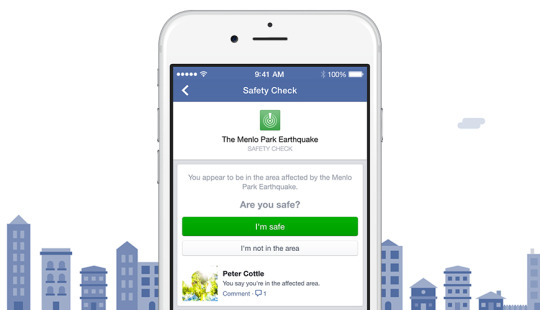
Well, luckily Facebook has also developed their own forms of crisis management. They have also gotten on board with the hashtag feature, similar to Twitter and have developed a Safety Check method, where users are able to mark that they’re safe to reassure family and friends on their Facebook account, who may have any concerns with their well-being after the disaster and will then be notified that they are okay and safe.
As well as that, Facebook have also introduced a crisis management technique which makes people constantly able to access links to Aid websites, to promote donations and be able to help countries who have been affected and who may need the help or as much as they can get. In example, when the Typhoon struck the Philippines or when Japan was hit with the massive 8.4 Earthquake and Tsunami, Facebook had ads shared onto the top of everyones Facebook newsfeed asking for donations.
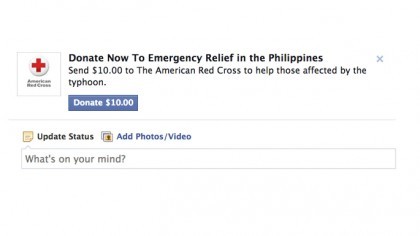
Below is a great video I found that pretty much sums up how social media has been helpful in these times of need and in what ways.
youtube
Sources:
Cowling, D. (2017). Social Media Statistics Australia – January 2017. [online] Socialmedianews.com.au. Available at: https://www.socialmedianews.com.au/social-media-statistics-australia-january-2017/ [Accessed 21 May 2017].
Creighton, D. (2016). Queensland's 2011 floods by the numbers. [online] Brisbane Times. Available at: http://www.brisbanetimes.com.au/queensland/queensland-floods-2011-the-floods-by-the-numbers-20160112-gm4czk.html [Accessed 21 May 2017].
Executive Summary: ‘#qldfloods and @QPSMedia: Crisis Communication on Twitter in the 2011 South East Queensland Floods’, pp 7-10. Bruns, A., Burgess, J., Crawford, K., Shaw, F. (2012)
3 notes
·
View notes
Text
How crowdsourcing is used during a crisis.
Social media is responsible for many changes in today’s society and the way we communicate as a whole. It has many positive traits and possibly just as many negative traits. The words ‘crowdsourcing’ and ‘social media’ make for an interesting subject, especially in times of a crisis. Over recent years and because of way too many disasters and crisis situations users of social media have played a major role in communicating information through their posts, imagery and videos to the world as a whole and specifically to family and friends of loved ones in need.
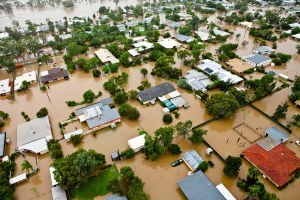
Source: Maranoa Regional Council 2011
Crowdsourcing also has the ability to assist in supporting imperative decision-making, especially in time poor crisis situations (Callaghan 2016, p. 238). As an example, in the South East QLD floods of 2011, social media platforms such as Twitter and Facebook were used extensively to communicate and disseminate information and updates from authorities and residents (Bruns et al. 2012, p. 1). Twitter played a major role in ‘crisis communication’ with the hashtag #qldfloods being used as the main communicating tool (Bruns et al. 2012, p. 12).

Source: Idisaster 2012a
News media outlets such as the ABC realise the value and importance of utilising social media as a way to quickly broadcast information and to tap into community supplied material such as images and video (Posetti & Lo 2012). This is especially true during a disaster, these witnesses are on the ground and their imagery is often imperative into understanding the scope of the situation. While the latter poses a risk mainly due to the trustworthiness and timeliness of the information received or available, the ABC believe crowdsourcing is highly valuable, especially given that people of today want to receive up to date information, particularly in a crisis situation (Posetti & Lo 2012).
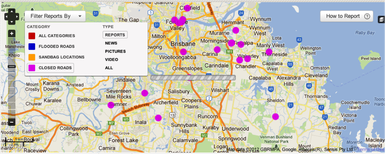
Source: Idisaster 2012b
With the advances in technology and social media platforms, information collected during a disaster is often used in social mapping (Callaghan 2016, p. 240). This information is geotagged with coordinates and through the use of inspection and authentication, it is integrated into a central map allowing disaster recovery efforts to be underpinned by the practice of crowdsourcing (Callaghan 2016, p. 240). Again there are risks involved with how authentic the information is and crisis-mapping platform Ushahidi is testament to this issue as they try and verify information received during disasters (Dietrich & Pawlak 2013, p. 1).
References
Bruns, A, Burgess, J, Crawford, K & Shaw, F 2012, ‘#qldfloods and @QPSMedia: Crisis Communication on Twitter in the 2011 South East Queensland Floods’, ArcCentre of Excellence for Creative Industries and Innovation, viewed 2 February 2017, <http://www.cci.edu.au/floodsreport.pdf>.
Callaghan, CW 2016, ‘Disaster management, crowdsourced R&D and probabilistic innovation theory: Toward real time disaster response capability’, International Journal of Disaster Risk Reduction, vol. 17, pp. 238-250.
Dietrich, C & Pawlak, P 2013, ‘Crowd-sourcing – crisis response in the digital age’, European Union Institute for Security Studies, November 2013, vol. 39, pp. 1-2.
Idisaster 2012a, ‘Brisbane city Qld Twitter post’ [image], in idisaster, Worpress, viewed 3 February 2017, <https://idisaster.files.wordpress.com/2012/01/brisbane41.png>.
Idisaster 2012b, ‘Brisbane - Ushahidi map’ [image], in idisaster, Worpress, viewed 3 February 2017, <https://idisaster.files.wordpress.com/2012/01/brisbane.png>.
Maranoa Regional Council 2011, ‘Roma2 – Floods’ [image], in Woolly Days, Wordpress, viewed 3 February 2017, <https://woollydays.files.wordpress.com/2011/03/roma2.jpg>.
Postetti, J & Lo, P 2012, ‘The Twitterisation of ABCs Emergency & Disaster Communication’, Australian Journal of Emergency Management, Vol. 27, no. 1, pp. 34-39.
2 notes
·
View notes
Text
Week 8: Crowdsourcing in times of crises
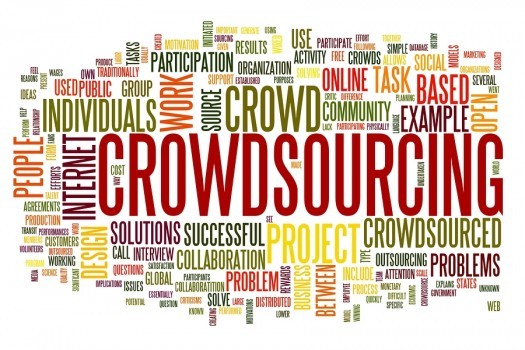
Image source: http://www.socialbrite.org/tag/crowdsourcing/
This week’s learnings and discussions lead us through communication in times of crisis and the ups and downs of using crowdsourcing.
For those not in the know ‘crowdsourcing’ is 'the practice of obtaining needed services, ideas, or content by soliciting contributions from a large group of people and especially from the online community rather than from traditional employees or suppliers' (Merriam Webster Online 2014).
Basically put, it’s how the general public and emergency services use social media platforms to share information and convey messages about imminent threats or danger to our community in terms of natural disasters or other. For example ‘crowdsourcing’ was used quite heavily during the QLD floods of 2011 and the massive earthquake that hit Haiti in 2010.
Image source: http://www.optimizationgroup.com/crowdsourcing-vs-co-creation-whats-the-difference/
Let’s take a look and see how social media played a part in each of the natural disasters mentioned above.
Queensland Floods 2011

Image souce: http://www.abc.net.au/news/2011-08-01/flood-inquiry-report-released/2819106
Starting with the Queensland floods. Twitter played a huge and integral part of communication during the flood crisis. The following stats come from a CCI Report investigating the use of Twitter during the QLD floods;
The hashtag #qldfloods was used more than 35,000 times during this period.
50-60% of #qldfloods were retweets and 30-40% of messages contained links to information on other websites
Emergency services and media organisations were among the most visible participants in #qldfloods
Leading accounts including the Queensland Police Service Media Unit (@QPSMedia), ABC News (@abcnews), and the Courier-Mail (@couriermail) received some 25 retweets for each of its messages, significantly amplifying audience reach.
By contrast the overall #qldfloods discussion contained substaintially more tweets by disussing the wider implications of the disaster and offering personal reactions, often send for elsewhere in Australian and the world.
As you can see, Twitter was an important advantage for, not only those directly affected, but also an advantage and opportunity to raise the profile of media and emergency services.

Through crowdsourcing, The Queensland Police Service Media Unit were able to collate all the retweets, images and video being sent through and via their account, disseminate and communicate
Haiti

Image Source: https://feww.wordpress.com/2010/02/23/earthquake-damage-in-haiti-engineers-report/
For the crisis in Haiti, it wasn’t so much social media that provided much needed information, it was other forms of technology such as radio and phone messages.
In our group discussion this week we spoke about how the use of text messaging and radio played an important role in the ability to share information about the Haiti crisis.
A phone number was set up to allow free text messages for anyone in Haiti. These messages were then used in an online capacity as volunteers where able to translate the messages and post information via various crowdsourcing platforms. These were then able to be picked up by rescue and emergency services on the ground for immediate response. The use of radio quickly became the best resort for directing aid.
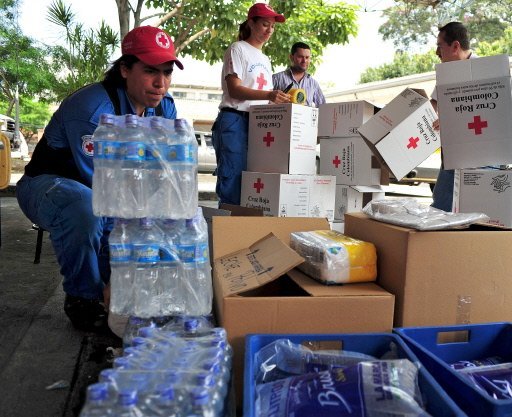
Image source: http://www.ladepeche.fr/article/2010/01/14/754944-haiti-l-aide-internationale-aux-victimes.html
At this point you might be thinking – isn’t crowdsourcing wonderful. But let’s not get too carried away. It’s not without its fair share of problems. One of them there is verification and credibility of information.
A classic example is that of the use of Ushahidi (Ushahidi was a media platform set up to report on the human rights abuses in the wake of the Kenyan presidential elections. Originally is was a collaboration between Kenyan and international citizen journalists and software developers. Since then it’s now able to be used worldwide for people to share their own mapping website and post reports). In her article on the use of Ushahidi, Heather Ford (2012) talks about the issue of verification. It was reported that verification for Ushahidi became critical during the Kenyan crisis. It became a problem as people were sending text messages just to start rumours. Information then had to be overlayed with that of mainstream media resulting in less reports and less mapping information.
So things like fake reporting and hackers can have a detrimental effect to crowdsourcing in times of crises.
Queensland Police Service Media Unit were able to combat this problem by setting up a #Mythbusters tweet. They were able to directly tackle any rumours or misinformation that came through in relation to the floods and these were then successfully retweeted.
Humanitarian Organisations
In the wake of disasters such as these, it appears that humanitarian organisations such as Red Cross UNICEF and other non-governmental organisations (NGO), all use social media to be able to collect information and using, visuals, coordinate relief making decisions. Social media is also a powerful tool for fund-raising and advocacy. A great example of this was the ASL Ice Bucket Challenge.
Those are the advantages. The disadvantages of using crowdsourcing data is the data is public, the information is not always reliable, harking back to my previous discussion on verification. Privacy and safety also becomes an issue in regards to details of donors and pictures or details of recipients but also the protection of the aid workers.
References:
Bruns, A, Burgess, J, Crawford, K & Shaw, F 2012, #qldfloods and @QPSMedia: Crisis Communication on Twitter in the 2011 South East Queensland Floods, Arc Centre of Excellence for Creative Industries and Innovation, pp. 7-10, viewed 13 January 2017, <http://www.cci.edu.au/floodsreport.pdf>.
Barbier. G, & Gao. H, & Goolsby. R, 2011, Harnessing the Crowdsourcing Power of Social Media for Disaster Relief, Cyber-Pyhsical-Social Systems, viewed 13 January 2017, <http://isivast.org.vn:8888/bitstream/123456789/11336/1/Intelligent%20systems%20and%20their%20application.Vol.26.Iss.3.A.1.pdf>
'crowdsourcing entry' 2014, Merriam Webster, viewed 13 January 2017,<http://www.merriam-webster.com/dictionary/crowdsourcing>.
Ford, H 2012, 'Crowd Wisdom', Index on Censorship, vol. 41, no. 4, pp. 33-39.
Khor. S.K, 2015, Top 3 Ways Social Media can Help Humanitarian Work (and 3 Pitfalls), Innovations in Health Communications, viewed 13 January 2017, <https://ihealthcomms.wordpress.com/2015/08/16/top-3-ways-social-media-can-help-humanitarian-work-and-3-pitfalls/>.
2 notes
·
View notes
Text
In case you may be underestimating the extent of the flooding in Brisbane city right now, a screenshot of a tiktok I just saw, and a screenshot of the same place on google maps

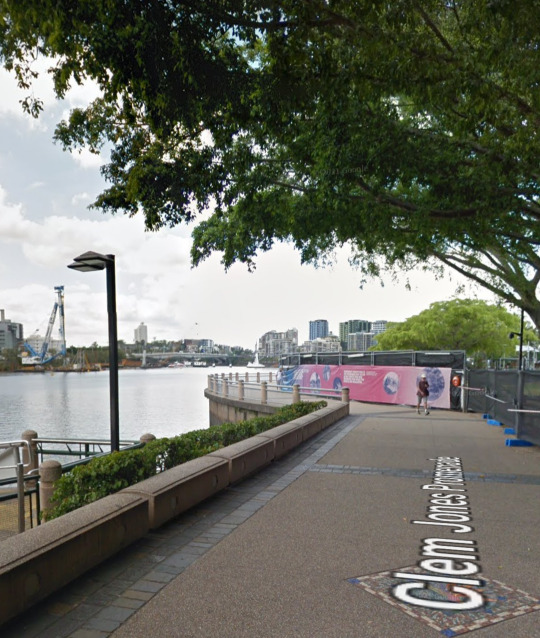
Honestly, the best place to see all the destruction and devastation is on tiktok, under the tags #qldfloods #queenslandfloods or #brisbanefloods
It makes you feel incredibly small and useless compared to the scale of this natural disaster... so many people are now displaced, homeless and have had their entire livelihoods inundated
Not only that, Brisbane isn't the only city going under, many other towns and cities in south-east Queensland are absolutely ravaged, with no way in or out for those who were able to stay
52 notes
·
View notes
Text
Tweet, Tweet, Tweet! I have information to share...
The emergence and growing shift of society forming digital communities has greatly shaped the effectiveness of crowdsourcing. Accessing digital technologies such as social media and other online platforms have been pivotal to this success. In times of crisis, individuals and organizations have used these mediums as a way to reach the most amount of users, or digital citizens, as possible. The success of crowdsourcing can be attributed to several central factors; the most prominent being immediacy. Analyzing this factor reveals the importance digital communities have had in effective crowdsourcing scenarios.

Modern crowdsourcing has successfully accessed digital platforms and social media; effectively removing all barriers that interfered with connectedness. Crowdsourcing leverages social media and online platforms capabilities to attain information and use it for a greater purpose (Rahman & Yadav 2016). Merriam Webster Online (2018) also describes the process as a way of obtaining information and other content from online communities, rather than via traditional methods like inhouse or company research. This method of gathering information has increased the speed in which content is received, which can be seen as an effective asset in times of crisis. Where traditional news broadcasts may take an entire day to reach information and report on it, accessing crowdsourced content allows immediate coverage. Recent research suggests that crowdsourced information, with the assistance of social media and online platforms, has the ability to reach millions of eyes within minutes (Koswatte, McDougall & Liu 2015). In disaster situations like floods, bushfires, and tsunamis, this can be a crucial tool in providing assistance and targeting areas in need.

During the 2011 Queensland Floods Twitter posts, featuring the #qldfloods hashtag, were an effective tool in gathering disaster information. Tweets spiked up to 1100 entries per hour during the event and had a continued presence over the days following (Bruns, Burgess, Crawford & Shaw 2012). This amount of information and the speed it was delivered greatly impacted disaster relief organisations ability to act on the situation, and the comprehensiveness of news coverage (Bruns et. al 2012). Whilst this example displays the effective use of Twitter for crowdsourcing information in times of crisis, many other social media platforms allow for this type of immediacy. The effectiveness greatly relies on the formation of digital communities and the increasing use of social media. Siapera (2012) suggests that society has a necessity to share information. This need is exploited in crowdsourcing events for positive effects. Crowdsourcing effectively access digital technologies to gather information in times of crisis.
Images that detail the disaster of the 2011 Queensland Floods can be found here
References
Bruns, A, Burgess, J, Crawford, K & Shaw, F 2012, #qldfloods and @QPSMedia: Crisis Communication on Twitter in the 2011 South East Queensland Floods, Arc Centre of Excellence for Creative Industries and Innovation, viewed 19 June 2018, <http://www.cci.edu.au/floodsreport.pdf>.
Koswatte, S, McDougall, K, Liu, X 2015, ‘SDI and crowdsourced information management automation for disaster management’, Survey Review, Taylor and Francis, United Kingdom, pp. 307 – 315.
Merriam Webster Online 2018, 'crowdsourcing entry', viewed 19 June 2018,<http://www.merriam-webster.com/dictionary/crowdsourcing>.
Rahman, Z, Yadav, M 2016, ‘The social role of social media: The case of Chennai rains 2015’, Social Network Analysis and Mining, Springer, Berlin, pp. 1 – 12.
Siapera, E 2012, ‘Socialities and social media’, Understanding New Media, Sage, London, pp. 191 – 208.
0 notes
Text
CROWD SOURCING IN TIMES OF CRISIS
This week the reading I found most interesting was the report by Bruns, Burgess, Crawford and Shaw that discusses the use of social media (most predominantly Twitter) during the Queensland Floods in 2011. I tend to really enjoy statistics and analytics in terms of social media.
Twitter disseminates information quickly and its shorter character count means that you need to get to the point. However, communication tools often go down and become unavailable in times of crisis. During the Queensland floods, however, it was effective in passing along messages.
Hashtags are an incredibly useful tool that enable users to “view what is being discussed on a particular topic and chat with each other” (Moorley & Chinn 2014). The hashtag #qldfloods became an important tool when tweeting about the disaster. It became a “central coordinating mechanism for floods-related user activity” on the social media platform. Between the 12th and 16th of January 2011, #qldfloods had 35, 000 tweets, “more than 11, 600 of them on 12 January alone (the height of the flooding in Brisbane)” (Bruns et al., p. 7).
The mass number of tweets that included the #qldfloods hashtag meant that people (including non-Twitter users) would be able to keep up to date with all the news regarding to the floods.
Hashtags have been a huge tool on social media for getting messages across. For example, the #NeverAgain movement went viral on Twitter after a school shooting in the US. It is a movement that started with the students at the school, and now has spread to most places in the US and around the world. The hashtag was able to bring all kinds of people together – students, celebrities, parents, teachers – to protest and call out the US government for their loose laws around gun control.
While the hashtags were definitely effective, the #NeverAgain movement would perhaps not been as successful had it not followed a school shooting. If somebody had randomly decided to start it, they would have needed “an established presence on Twitter” as well as an understanding of how to work with “emerging user practices” like hashtags (Bruns et al., p. 9). However, because they had been through such an unfortunate situation (and were not the first OR last people to be put through that unfortunate type of event), they had an incredible and supportive community around them that were able to support them. I think this is important. If people don’t have a community that supports them, there isn’t going to be anybody to help spread the message.

REFERENCES
- Bruns, A Burgess, J Crawford, Shaw F 2012, ‘#qldfloods and @QPSMedia: Crisis Communication on Twitter in the 2011 South East Queensland Floods’
- Moorley, C Chinn, T 2014, Nursing and Twitter: Creating an online community using hashtags, Faculty of Health and Social Care, vol. 21, no. 2, viewed 02 May 2018, <https://www.collegianjournal.com/article/S1322-7696(14)00031-6/fulltext>
Giphy 2018, ‘TV Series Community Gif’, Giphy, viewed 26th April 2018, <https://giphy.com/gifs/community-tv-series-ken-jeong-Cqpauhc11T692>
0 notes
Photo
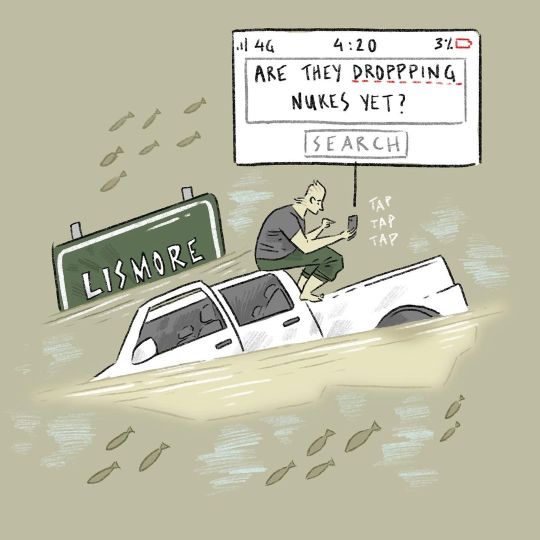
2022, that’s the way she goes - - - #lismore #nswfloods #qldfloods #ww3 #ukraine #russia #pandemic #illustration #cartoon #trailerparkboys #drawing #sketch #comic (at Lismore, New South Wales) https://www.instagram.com/p/CahZfJUJg1f/?utm_medium=tumblr
#lismore#nswfloods#qldfloods#ww3#ukraine#russia#pandemic#illustration#cartoon#trailerparkboys#drawing#sketch#comic
0 notes
Text
#5 CROWD SOURCING IN TIMES OF CRISIS
At some point in our social media lives, I am sure we’ve all come across a post that has someone asking for money. Sometimes it’s a friend trying to cover the cost of medical bills, and other times it could be an organization raiding money for a national crisis. It then usually tends to lead you to a GoFundMe page, with their hopes of individuals contributing to crowdfunding their cause, no matter what their reason is.

Crowd sourcing has become to be an important factor in times of crisis and has been made easier with social media and the tools that are available through an online presence. The standard community-level communication channels, that are around already have to purpose and ability to distribute information during a time of crisis, and with the use of social media the channels are able to be adapted to a new form and continue to distribute information in times of crisis.
The term crowdsourcing was coined by Jeff Howe, a politician from Minnesota. He defined it as “the act of taking a job traditionally performed by a designated agent and outsourcing it to an undefined, generally large group of people in the form of an open call” (Posetti 2012, p. 36).
The 2011 Queensland floods, was a key example of social platforms – Facebook and Twitter – playing an important role in this crisis and was also one of our main topics of this week’s lecture. The hashtag #qldfloods was used in over 35,000 tweets, that were sent during the disaster, and very quickly became an easy way for users to find information and used to “share breaking news of the latest event” (Liddy 2013, p. 1).
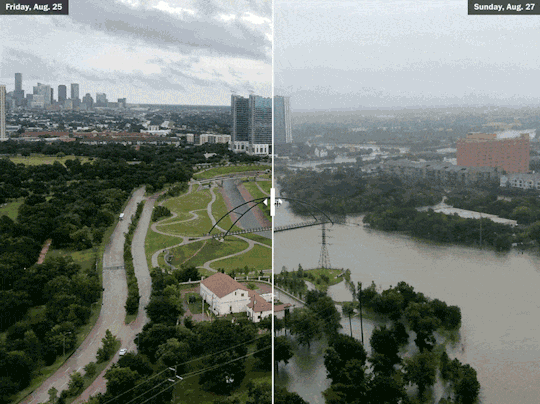
Twitter became a source for mainstream media both within Australia and overseas. Social media users around the world were sharing flood-related media resources. Whilst those close to the disaster were sharing their own experiences, as well as information and discussing the topic amongst other users (Liddy 2013, p. 1).
And now with how powerful social media has become – in particular Twitter – events can be organized more quickly, and with these events users are able to “find other who share their views and work together in disparate location to produce powerful sources of information” (Ford 2012, p. 33).
An example of this is the Manchester bombing, but more so the One Love Manchester, the benefit concert that saw Ariana Grande accompanied by Miley Cyrus, Katy Perry, Coldplay, Niall Horan and many more others come together to help raise money for the We Love Manchester Emergency Fund, which was established after the concert two weeks prior. The benefit concert raised more than 10 million pounds for the Emergency Fun, as throughout the performances, there were instructions on how to donate.

Both examples are important to show social media’s role in the crisis communication and emergency management. With these events still having similar ones happening to this day, it is important for regulatory bodies and emergency services teams have strategies that use both traditional and new communication technologies. With this it will help them to stay on top of what is happening during the times of crisis and pass on information that could save lives.
References:
Ford, H. (2012) ‘Crowd Wisdom’, Index on Censorship, pp 33-39
Posetti, J. & Lo, P. (2012) 'The Twitterisation of ABCs Emergency & Disaster Communication'
Gritt, E 2017, ‘Ariana Grande: ‘we had a totally different show planned’, News.com.au, 5th June 2017, pg1
Liddy, M 2013, ‘How Twitter covered the Queensland floods’, ABC News, 26th April 2013, pg. 1.
0 notes
Text
Who Is Speaking
The World Health Organisations deals with crisis regularly and in their Strategic Communications Framework brochure they state that effective, integrated and co-ordinated communication is integral to their work. They further state that there are six pillars to their communication strategy whether through mass media, online or on the ground. They are:
Accessible – that the right people can reach the information when and in a way that suits their needs
Actionable – that the audience will be moved towards whatever action is needed
Credible and Trusted – that the information is seen as credible and that the organisation is speaking with once voice
Relevant – that the information provided is relevant to the situation and the audience
Timely – that the organisation communicates what they know early and build the conversation themselves
Understandable – use of appropriate language specific to the audience and to build a story if necessary
I think these pillars of communication are important to this week’s learnings, as many of the examples studied proved that emergency organisations were either overwhelmed or left behind in the tidal wave of crowd sourced information resulting from a crisis.
Although communication during crisis situations is critical, the availability of communication channels and the credibility of the sources of information make this process complicated. As demonstrated through the learning material, there are several channels that are available for communicating in a crisis, however the relevance and effectiveness of these channels and integrity of the information shared varied greatly.

Social media as a platform for sharing information both about what is happening and what resources are available to those affected by the crisis are proving to have value. However, as previously mentioned the credibility of the information is paramount to the effectiveness of this process. All the readings alluded to the fact that as channels of communication social media platforms were useful but would still require a lot of development, particularly in strategy and skills of the official bodies using them.

The Queensland Police proved that social media could be used effectively in both disseminating information and guiding the conversation through their Twitter account during the 2011 Queensland floods. They strongly lead the conversation between Twitter users and the media in spreading the right information, sidestepping misleading or incorrect information and focusing on the issue at hand rather than sensationalism of the crisis (Bruns et al, 2012).
However, the involvement of various social media platforms during the Boston Marathon bombing proved to be disastrous. Because the information dissemination was led by the public, false information flooded the social media, accusations and misinformation were rampant and the emergency authorities were not in control of the information flow.
As examined in the ‘Crowd Wisdom’ (Ford, 2012) article, the Ushahidi platforms effectiveness and relevance was dependent on cultural drivers of the population where it was being used and whether the people trusted it as a source of information. Heather Ford further stated that verifying the information for accuracy was a critical factor and was depended on the teams who were at ground level, their experience at gathering data and evaluating it for verification.
All this proves that there are many potential uses for crowd sourcing of information in emergency situations, however, there are still many problems that need to be addressed, particularly the one of strategic development and ability of the emergency organisations involved.
Links:
WHO Strategic Communications Framework for Effective Communications Link: http://www.who.int/mediacentre/communication-framework.pdf
Wikipedia - Boston Marathon bombings in 2014: http://en.wikipedia.org/wiki/Boston_Marathon_bombings
References:
Bruns, A, Burgess, J, Crawford, K & Shaw, F 2012, #qldfloods and @QPSMedia: Crisis Communication on Twitter in the 2011 South East Queensland Floods, Arc Centre of Excellence for Creative Industries and Innovation, pp. 7-10, <http://www.cci.edu.au/floodsreport.pdf>, Viewed: 3 Jan 2018,
Ford, H 2012, 'Crowd Wisdom', Index on Censorship, vol. 41, no. 4, pp. 33-39.
Images:
Berke PR 2017, Why is Houston so vulnerable to devastating floods?, BBC News website, Image, <http://www.bbc.com/news/world-us-canada-41107049>, Viewed: 24 Jan 2018
Day J 2016, How Crowdsourcing Can Benefit Education, Ideascale website, Image, <https://ideascale.com/how-crowdsourcing-can-benefit-education/>, Viewed: 24 Jan 2018
0 notes
Text
Week 8: CROWD SOURCING IN TIMES OF CRISIS
Its no doubt that everyone’s Facebook, twitter or even Instagram feed are full with news articles, some like the daily mail are just false articles about celebrities but there are also many reputable sources who have joined social media in order to spread updates fast to a large number of people. These accounts are able to warn, update, and prevent disasters occurring, I often see SES posts in my feed which family or friends have liked as well as state police departments using Facebook in both humorous ways and ways to share news. The one thing social media cannot prevent is natural disasters, like black Saturday or the Nepal earthquakes but they can however keep people away from the areas or used in a way to let others know who is safe. Facebook have recently added a ‘safety check’ feature which uses your location and allows you to post an update that you are safe and well. Hashtags are also a major part in spreading a message viral, for example the Queensland floods in 2011 where 35,000 tweets with the #qldfloods were poste din a 6-day period. With the majority being retweets spreading a message to their own followers and so on. Following on from this was the use of social media to help fund and raise money for those affected by the floods, this message was spread around with shares and retweets. Without social media there is not question that not nearly the same amount of money would have been reached and this is a prime example of crowd sourcing in times of crisis where Australia came together to help Queensland.
0 notes